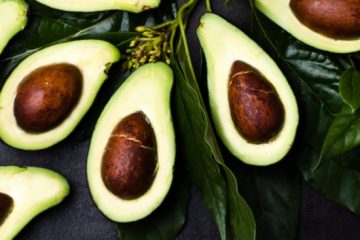By Sofia Norton of www.kissmyketo.com
Good nutrition and exercising go hand in hand. However, what exactly constitutes good nutrition in relation to exercise? Well, one major aspect of good exercise nutrition has to do with fuel, and in most cases that fuel is carbohydrates. Current recommendations state that athletes should consume 30-60g of carbohydrates for every hour of endurance training.
But what if someone is following a low-carbohydrate diet such as keto? As it turns out, our bodies are very adaptable, and it can run on fat just as good as it can on carbohydrates. In fact, keto may give athletes an upper hand in some cases. However, not following this diet correctly is known to actually lead to worse exercise performance.
The Keto Diet
The ketogenic diet is a very low-carb diet where you get most of your daily calories from fat and restrict carbs to 20-50g/day. The goal of this diet is ketosis, an altered metabolic state in which much of the body’s energy comes from ketones instead of carbohydrates. Ketones are acidic molecules that the liver makes from fat to purely to replace glucose for fuel in times of starvation, illness, and low-carb intake.
This diet was first designed in the 1920s as an epilepsy treatment and was also used for a long time as to treat diabetes. However, keto is known to upregulate fat burning (beta-oxidation), and naturally, people were curious if this diet could help with weight loss. As a growing body of studies now shows, keto can help people lose weight quickly and keep it off.
The ketogenic diet was found to be promising for many other things, including cardiovascular disease prevention, cancer prevention, improvement of mental functioning, increased energy levels, and even better sleep. These benefits come directly from ketones, whose levels this diet boosts, but also from improved metabolic functioning on this diet.
To explain it better, ketones provide more energy per unit of oxygen than glucose. This makes ketones antioxidants to a certain extent. There’s also evidence that ketones improve the health and functioning of energy-generating organelles in muscle cells called mitochondria. Metabolic health depends a lot on mitochondrial health. And finally, the keto diet helps your body become more metabolically flexible by forcing it to burn fat for fuel.
Can I Work Out on a Keto Diet?
The ketogenic diet has garnered the attention of athletes such as LeBron James and Zach Bitter. Athletes are now switching to keto as a way to get an almost unlimited flow of energy during workouts and to improve their body composition. And they have experts in nutritional biochemistry such as Stephen Phinney, MD, Ph.D. to back them up..
Still, many interested in the keto diet for exercise are wary about using it to fuel their workouts. This isn’t at all surprising given that carbs were and still are the mainstay of sports nutrition. Another reason gym goers and athletes are wary about going keto is because studies often show keto impairs anaerobic exercise performance in particular. That’s because anaerobic exercises are fueled only by glucose derived from carbohydrates in food. So, can one really work out safely on diet that provides very few carbohydrates?
In a nutshell, yes, anyone can work out and improve their exercise performance after following the ketogenic diet for some time. Most studies finding that the keto diet impairs exercise performance are short-term. Long-term studies paint a different picture, i.e. that the ketogenic enhances exercise performance.
But why exactly does keto improve exercise performance only after a person has been on this diet for a while (4-6 weeks)? The answer lies in something called keto-adaptation, also known as fat-adaptation.
Keto-adaptation is when the body has become perfectly adapted to utilizing fat and ketones to make energy. It happens only after long-term ketosis, usually lasting several weeks. The muscles of keto-adapted athletes use fat more efficiently than those who are not on a low-carb diet. Their muscles will utilize glucose only when absolutely needed.
Besides that, ketones are a more efficient energy source than carbs, and many athletes find that they are able to exercise for longer and better. This is especially true for aerobic activities. That isn’t to say that glucose is not needed for normal exercise performance. It still is, but not to the extent once believed.
Exercises Allowed on a Keto Diet
It’s a common misconception that you can only do light aerobic activity on a keto diet and that you need to avoid high-intensity anaerobic training. You can do every possible exercise on keto and not risk damaging your muscles or falling in performance. Below are the exercises you can practice on keto explained.
Aerobic
Aerobic exercise is also known as cardio. It can be low to high intensity and involves activities that depend primarily on that depends on oxygen for energy. Low-intensity aerobic workouts can be performed for a long period of time after which they may become anaerobic. Examples of aerobic workouts include:
Jogging
Running
Cycling
Walking
Swimming
Aerobic activity boosts heart rate, increasing the volume of oxygenated blood that reaches the muscles. Your muscles need a lot of oxygen to make energy during aerobic workouts, and the body uses this oxygen to burn both fat and glucose. Since the ketogenic diet is high in fat, your body will be able to utilize fat for energy during aerobic workouts despite the diet being low in carbohydrates and even if you’ve been on this diet only for a short amount of time.
Another thing worth noting is that blood glucose remains normal on a ketogenic diet, so your body can burn both glucose and fat during aerobic activities on keto. The reason blood glucose levels remain stable is because the body converts protein to glucose through a metabolic pathway called gluconeogenesis to keep blood glucose within normal ranges.
Anaerobic
Anaerobic exercise is short-lasting and intense. During anaerobic workouts, the body’s demand for oxygenated blood exceeds its ability to provide it. To compensate, the body starts to make energy through different pathways and that don’t require oxygen, thus the term anaerobic.
The main source of energy during anaerobic training is muscle glycogen and the main metabolic pathway is glycolysis. Your body cannot use fat to make energy during anaerobic workouts. Examples of anaerobic activities include:
Sprinting
Weight lifting
Jumping
You will notice that you’re generally out of breath during these activities. One of the main benefits of anaerobic workouts is that they help build muscle more effectively than anaerobic workouts.
Unfortunately, because your body cannot use fat to get energy during anaerobic workouts, many believe that these workouts aren’t suitable on a high-fat diet like keto. However, studies show that keto-adapted endurance athletes burn more fat during high-intensity workouts than athletes on standard diets.
Still, glucose is necessary during many anaerobic activities (e.g. sprinting), and the body will break down protein from food or muscle to provide energy. It just happens to become perfectly adapted to using fat for energy and glucose (from carbs and protein) only when needed.
Flexibility
Flexibility training is what its name implies – training that promotes flexibility. It helps you maintain good motion in your joints. Flexibility exercises help athletes and gym goers avoid injuries and perform better. However, some people may only use flexibility exercises to improve their posture or reduce back pain, for example.
Examples of flexibility exercises include:
Stretching
Yoga
Pilates
Tai Chi
Flexibility training is usually light activity and is safe for short-term keto dieters. It can help boost aerobic fitness and increase blood flow to muscles for easier recovery.
Stability
Another form of light training that’s perfectly ok if you’re on a keto diet is stability training. This form of workout includes core training and balance. Balance training helps you control your balance to prevent falls. Core training involves movements that engage your core muscles, i.e. the muscles in your trunk. Core training also gives you balance in addition to strength and power.
Examples of core training include:
Plank
Crunches
Flutter Kicks
Side plan
While stability exercise is more static, core training is dynamic and is usually anaerobic. If performed at moderate intensity, you can perform core training after short-term ketosis. Proceed with high-intensity core training after becoming keto adapted.
Conclusion
Carbohydrates are an important source of fuel for athletes and gym goers. They fuel muscles during workouts but are of greatest importance during anaerobic training. Anaerobic training relies solely on carbohydrates. And if intake of this macronutrient is inadequate, there’s always the danger of muscle breakdown. That’s why many athletes are wary of low-carbohydrate such as the ketogenic diet.
However, studies show that the body can adapt to low-carbohydrate intake. Athletes who’ve been on keto for long enough for their bodies to adapt perform just as well, if not better, as athletes on standard diets. The body becomes more efficient at utilizing fat for fuel after being in ketosis for several weeks, sparing muscle glycogen and blood glucose during high-intensity training.
Takeaways
- The ketogenic diet can help athletes perform better only after they become keto-adapted.
- The keto-adapted athlete burns fat at a higher rate than non-adapted athletes.
- Glucose and carbohydrates are still required during exercises, but not to the same extent as when someone is not fat-adapted.



0 Comments